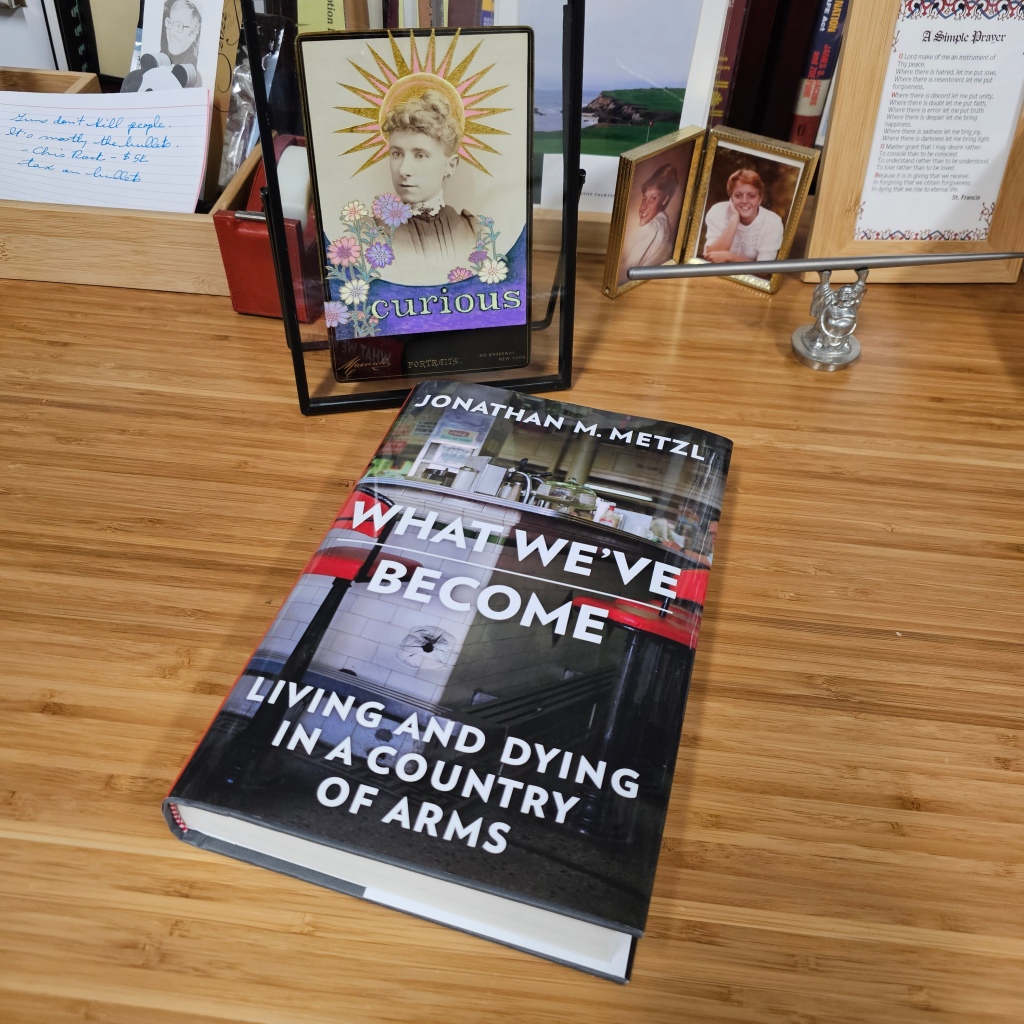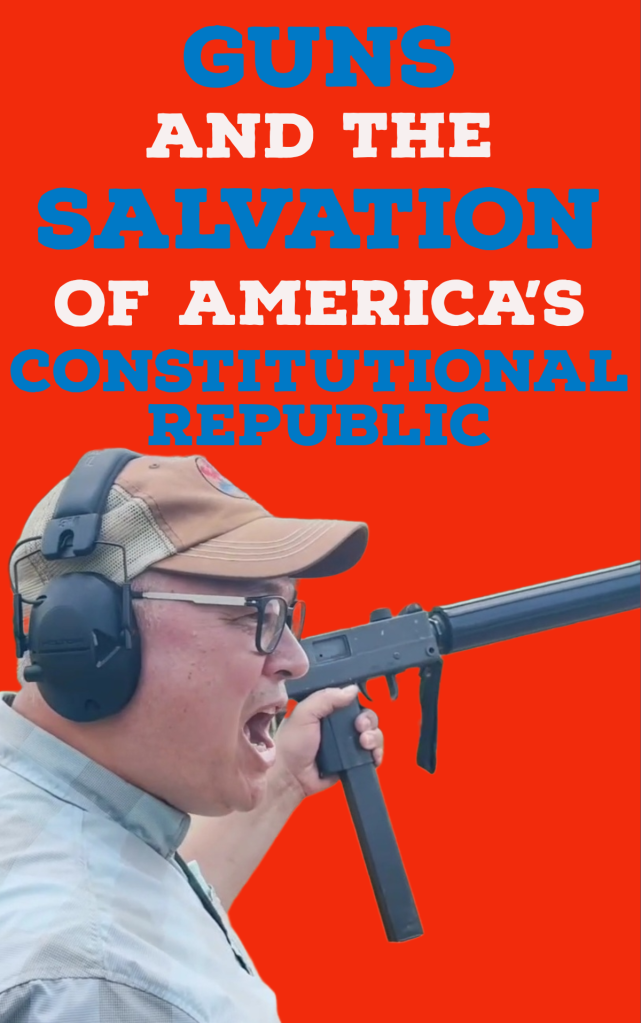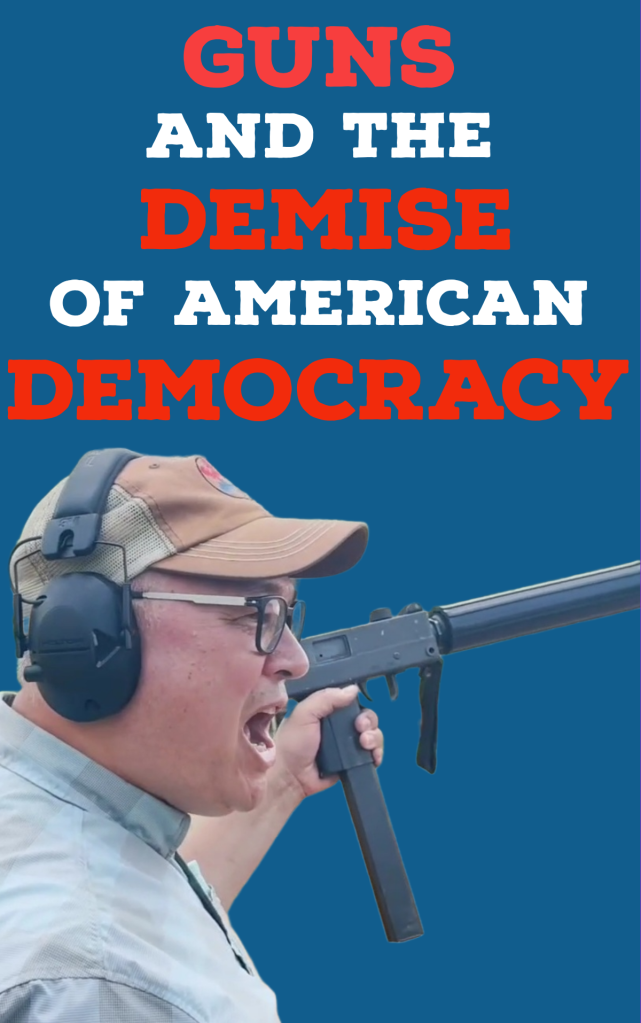The second Light Over Heat Virtual Book Club kicked off last night with a thoughtful discussion of Jonathan Metzl’s recently published book, What We’ve Become: Living and Dying in a Country of Arms (Amazon affiliate link to help offset my expenses in doing this work).
The basic format of the book club is a panel of 12 people discussing the book in a Zoom Webinar, with anyone else interested able to attend and interact with each other and the panel in the webinar chat. For our first meeting, we had 11 of 12 panelists present and 15 people going strong in the chat (of 25 registrants – a solid turnout!).
To encourage candor, the sessions are not recorded, but all are welcome who can attend the bi-weekly events at 6:00pm Eastern Time. Registration link: link: https://wakeforest-university.zoom.us/webinar/register/WN_jmhtxIKMQ8eOSXOYlhAkmw.
The book club panel is fairly diverse, with a bias toward enthusiastic gun owners, but with considerable ideological diversity among them. We also benefit from having JJ Janflone from Brady on the panel and just added criminologist Tara Warner.
I’ve long argued for the importance of brave, empathetic, and civil face-to-face conversations about difficult issues across our differences. I think this book club realizes that goal.
For the first session, we read the first 88 pages of Metzl’s book. Following are the “reading notes” I brought with me to the meeting.

I encourage panelists each session to first read with the text (what did you like or appreciate?) and then to read against the text (what did you dislike?). Here are my likes and dislikes so far:
LIKE
(1) Metzl: Drawing especially on court testimony, we re-live the experience of the Waffle House shooting from the perspective of its surviving victims. And we learn something about the irreplaceable uniqueness of those who lost their lives.
Yamane: These were not easy sections of the book to read, and at times I wanted to just skip ahead to the next section. But I forced myself to read — and also to sit with and contemplate — the experiences described. As an empirical social scientist, it is easy for me to step back from the literal flesh-and-blood details of these events and look at broader patterns (how many mass shootings per year, what percentage with AR-15s, etc.). It is important to step back and analyze these cases objectively. But to fully understand negative outcomes with guns and divisive views of guns in American society, we do well to put ourselves in others’ shoes. I think that’s called empathy.
(2) Metzl: “I do not suggest equating gun owners with mass shooters—quite the opposite. Most gun owners act lawfully, and most purchased guns are never fired in real-world situations” (p. 7).
Yamane: Shouldn’t have to be said, but it does need to be said and I appreciate it being said.
(3) Metzl: “The framework through which liberal America understood guns were replete with their own sets of implicit biases against gun owners” (p. 8).
Yamane: Again, shouldn’t have to be said, but I appreciate it being said. A question going forward is whether this and the previous observation about gun owners generally acting lawfully are just asides or whether they are central to Metzl’s project.
(4) Metzl highlights differing underlying visions of what a good society looks like among the American population (p. 11). For example, how much willingness should there be to sacrifice freedom for common good (p. 13).
Yamane: He is smart to recognize this, but it also creates challenges in figuring out a way forward because people’s orientations to guns, gun safety, gun regulation, and gun rights are shaped by these underlying visions. Moreover, they are driven by deeply rooted experiences, intuitions, and emotions that are not subject to rational argumentation. I.e., I don’t think you can reason a person into a different fundamental underlying vision of the country or understanding of guns. I think Metzl understands this and am looking forward to how he gets around it.
(5) Metzl: “I advocate for methods that more closely align the incentives and interests of gun owners and non-gun-owners” (p. 12-13).
Yamane: Really looking forward to this.
(6) Metzl: “Guns are not ideological statements; they are daily life” (p. 21).
Yamane: Of course, for some — on both sides of the great gun divide — guns are an ideological statement. Symbols of good or evil. The salvation of democracy or threats to democracy. A political wedge between red and blue. But for many (of us), guns are a normal part of our normal lives. Read my book!


DISLIKE
(1) Metzl: Uses “clip” to describe the magazines the Waffle House shooter was carrying. In the first sentence of the second paragraph on p. 1 of the book.
Yamane: I am relatively new to guns and not a guncrank or gear head when it comes to gun technologies. So, I try not to be the language police when people of goodwill simply misspeak or misunderstand technical details about guns. But if I was writing a book that was really trying to recognize the normality of gun owners and bring them on-board with my program (as Metzl suggests – see above “likes”), then I would be sure to get the language right. And Metzl says that he had Mike “The Gun Guy” Weisser read his work specifically for this purpose. And yet here is “clip,” so early in the book, so unavoidable at the start. Why?
(2) Metzl: Very frequently — I would even say fundamentally — portrays the country as “red” vs. “blue.” He also distinguishes early on between “gun country America” (p. 5) and “liberal America” (p. 9).
Yamane: There is no question that in terms of our political structures, we are dividing up into “red” states and “blue” states. Gerrymandering into non-competitive districts perpetuates this in state legislatures. Red states are increasingly all in on gun rights and blue states all in on gun restrictions. So, Metzl’s language is fair in this respect.
But not only is there considerable political diversity even in “red” and “blue” states, the distinction between “gun country America” and “liberal America” is drawn too sharply for my taste.
(3) Metzl: Quotes approvingly New York Times opinion writer Jamelle Bouie’s claim that permissive gun laws challenge the possibility of open, democratic society (10).
Yamane: This is an opinion. Metzl could have cited another New York Times opinion by sociologist Harel Shapira that I have commented on extensively (and addressed also in my book). Whether it will be empirically established in the book remains to be seen. It does fit well with what I call The Master Narrative of Democracy-Destroying Right-Wing Gun Culture.
(4) Metzl: The National Rifle Association (NRA) looms large in Metzl’s analysis of gun culture and politics. Rightfully so.
Yamane: But as with so many critics of the NRA, in his distaste for the organization, Metzl gives the NRA more credit than they are due. I don’t have the book in front of me and didn’t capture the full quotes (I will add these back later), but in talking about the growing interest of racial minorities in gun ownership in 2020, Metzl connects that interest to fear generated by the NRA following the George Floyd murder (p. 39). And in talking about how guns became a political wedge issue, Metzl credits/blames the NRA when in fact both sides of the wedge played a role in this. Our first book club read, Andrew McKevitt’s Gun Country, actually highlights the relationship of action and reaction that exists between gun rights and gun control advocates.

[…] recap also includes my reading notes of what I liked and disliked about the first section we […]
LikeLike